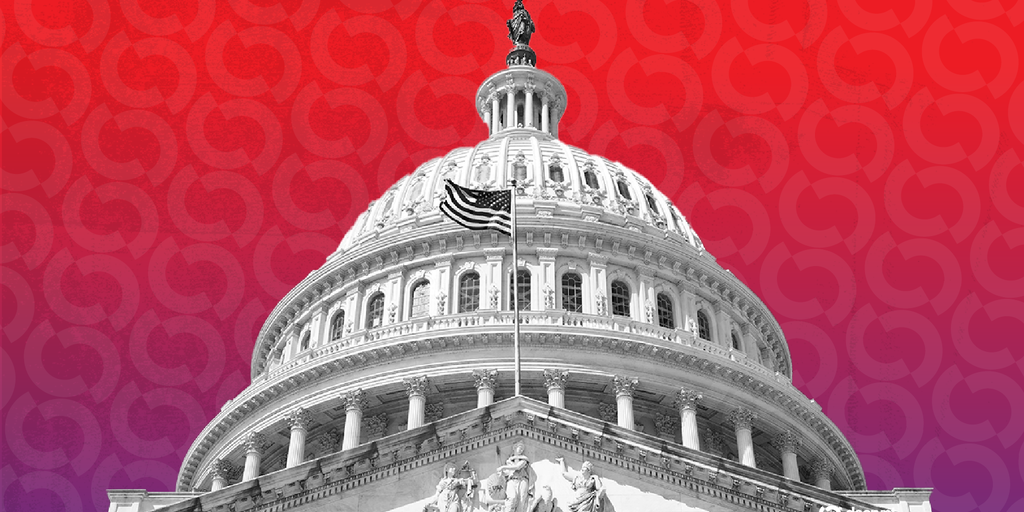In brief
- Lawmakers in Congress have formally introduced a crypto market structure bill known as the Digital Asset Market Clarity (CLARITY) Act.
- The bill seeks to end SEC oversight of the crypto industry.
- Most, if not all, crypto assets would fall under CFTC jurisdiction as “digital commodities.”
House lawmakers today unveiled a new crypto market structure bill that would end SEC oversight over the industry and, for the first time, create a formal pathway to legality in the United States for most digital assets.
The legislation, dubbed the Digital Asset Market Clarity (CLARITY) Act, closely resembles a draft bill circulated earlier this month. It would go back and amend America’s foundational securities laws to explicitly carve out most crypto assets from the definition of security, and thus, end the SEC’s stringent oversight.
Most digital assets, per the bill, would instead be regulated by the CFTC, which generally takes a much more hands-off approach to regulating financial products.
The CLARITY Act ensures that financial innovation and development of digital assets occurs here in the United States,” Rep. Bryan Steil (R-WI), chair of the House’s Financial Services Subcommittee, said in a statement. “Our bill secures American dominance, democratizes digital assets, unleashes innovation, and protects consumers from fraud.”
The Republican-steered bill has bipartisan support, with three Democrats currently aboard as consponsors: House Agriculture Committee Ranking Member Angie Craig (D-MN), Rep. Ritchie Torres (D-NY), and Rep. Don Davis (D-NC).
Per its latest language, any digital asset “intrinsically linked to a blockchain system” should be considered a digital commodity, so long as it is used, for instance, to “transfer value between participants in the blockchain system.” That definition covers the vast majority of popular cryptocurrencies, including Ethereum, Solana, Cardano, XRP, and Dogecoin. The language in the bill is broad enough that it could, in fact, cover virtually all crypto assets, including so-called governance tokens like World Liberty Financial’s WLFI, which is backed by President Donald Trump and his business partners.
The bill states that any digital asset that meets the definition of a security or security derivative should not be considered a digital commodity. It does not, however, clarify how regulators or courts should determine when an asset that otherwise meets the definition of “digital commodity” should be categorized instead as a security.
Generally, America’s securities laws do not contain language exempting certain assets based on their technological composition. Experts have warned that adding such language to the longstanding legislation, which has governed U.S. financial markets since the wake of the Great Depression, could trigger knock-on effects with the potential to spill over into the traditional financial markets of Wall Street.
While most crypto tokens appear to meet the CLARITY Act’s definition of digital commodity, the bill also introduces a more rigorous classification of “mature blockchain system” for crypto asset issuers who choose to comply. To be clear, though, there’s no requirement for assets already defined as “digital commodities” in this bill to also meet the bar of “mature blockchain system,” and the additional scrutiny provides only marginal benefits.
To meet the definition of a mature blockchain system, a network issuing an asset must be, for instance, open source, automated, and unable to be controlled by a single person or entity (except in the name of maintenance or mitigating cybersecurity risks). Further, no single person or entity is permitted to “beneficially own” more than 20% of the asset.
Whether incentives are aligned to encourage digital asset issuers to register as mature blockchain systems is unclear, however. Once a digital asset issuer makes it through the arduous, yearslong process of getting certified as a mature blockchain system, certain restrictions on the asset will be relaxed, including, for example, the ability for token founders and institutional holders to freely sell the asset.
But that process may not be worth it—given that most digital asset issuers that don’t meet the definition of a mature blockchain system will still be able to issue their tokens and have them trade freely on secondary markets.
“That’s honestly part of my concern with the overall thesis of the bill,” one crypto policy leader who read the bill’s latest draft told Decrypt. “Maturity doesn’t get you much.”
The CLARITY Act will next go before the House Financial Services Committee for a full markup. That hearing is currently set for June 10.
Daily Debrief Newsletter
Start every day with the top news stories right now, plus original features, a podcast, videos and more.







